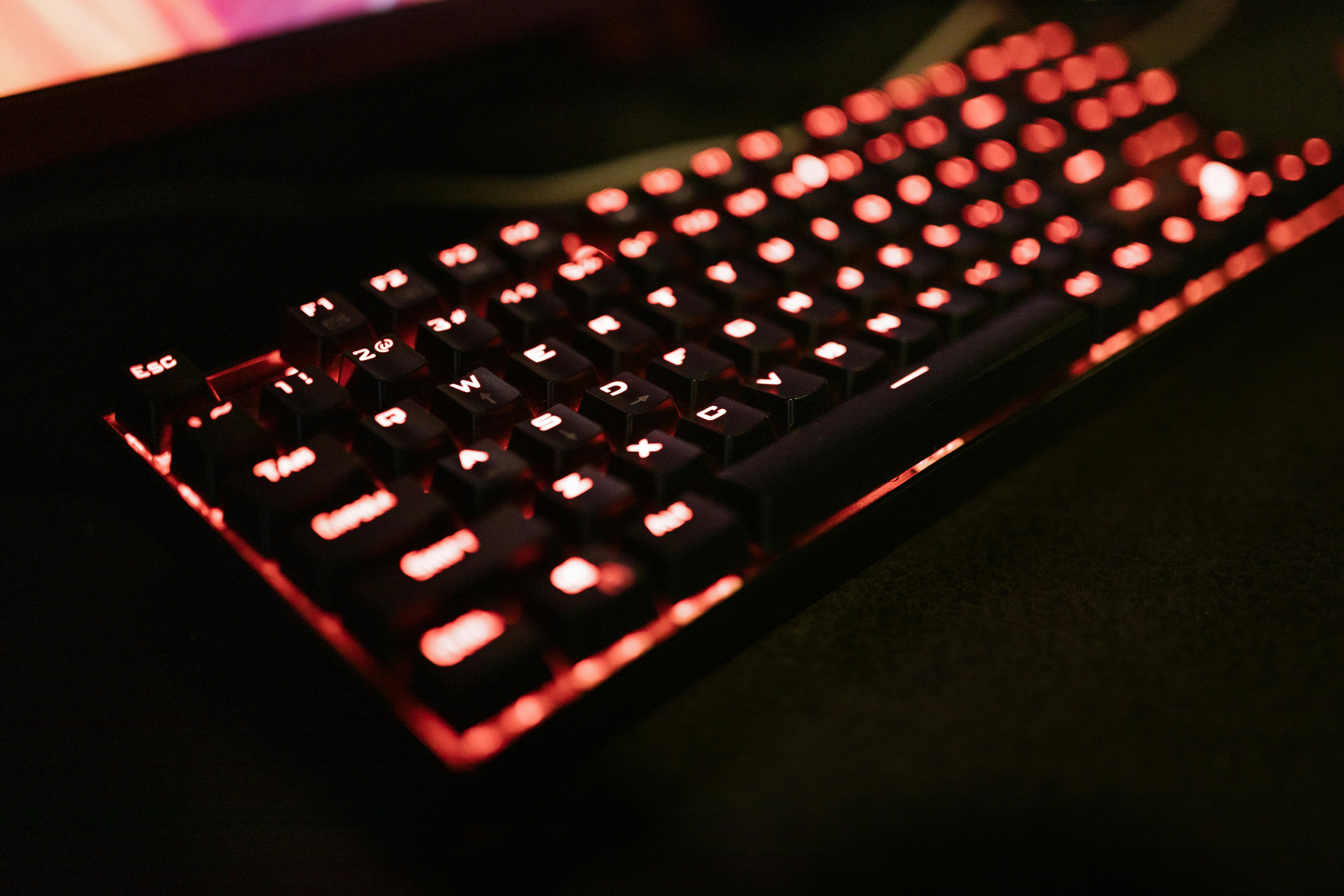How to Choose a Budget Mechanical Keyboard
8/15/2025 · Keyboards · 6 min

TL;DR
- Gaming on a budget: go 60%/TKL, linear Reds, wired or 2.4 GHz, and a polling rate ≥1000 Hz if available.
- Typing first: TKL or full-size, tactile Browns, look for PBT (or at least doubleshot ABS) caps.
- Shared spaces: pick Silent Reds (or add O-rings/foam) and avoid clicky Blues.
Switch Types
> Under $50 you’ll often see Outemu or other clones. They’re fine; just expect more variance than premium brands.
- Red (linear): Smooth travel, light press, quieter. Great for gaming.
- Brown (tactile): Small bump without loud click. Good all-rounder for typing + gaming.
- Blue (clicky): Tactile + loud click. Fun, but noisy—bad for shared rooms.
- Silent Red/Black: Damped stems for quieter sound.
- Speed/Silver: Shorter travel; snappy for fast inputs.
Layout & Sizes
> If you use arrows a lot, prefer 65%/75%/TKL over 60%.
- 60%: No arrows or F-row. Smallest footprint.
- 65%: Like 60% with arrows—great compact daily driver.
- 75%: Compact with arrows + F-row.
- TKL (80%): No numpad; popular balance for gaming/office.
- Full-size / 96%: Includes numpad; 96% compresses spacing to save desk space.
Connectivity & Latency
- Wired (USB-C): Cheapest, lowest latency, no batteries.
- 2.4 GHz dongle: Near-wired feel; check for 1000 Hz polling when listed.
- Bluetooth: Most convenient for laptops/tablets, but highest latency.
Hot-Swap vs. Fixed Sockets
- Hot-swap lets you change switches without soldering, but under $50 it’s less common.
- Many budget hot-swap boards use Outemu-only sockets (often 3-pin); standard 5-pin switches may not fit.
Keycaps & Legends
- PBT resists shine and feels textured; ABS can get glossy.
- Doubleshot legends won’t wear off; pad-printed/laser may fade.
- If you want backlight to shine through, look for shine-through caps.
- Check ANSI vs. ISO layout if you need a specific Enter key shape.
Build & Sound
- Expect plastic cases and steel plates at this price.
- Better sound/feel comes from lubed stabilizers and a bit of foam inside the case (some budget boards include it now).
- Simple mods (tape mod, foam sheet, switch lube) can noticeably improve feel.
Software & Macros
- Many budget boards have basic software for per-key RGB, layers, and macros. If software is flaky, look for models with on-board shortcuts instead.
Features Worth Skipping Under $50
- Fancy per-key RGB effects if it means worse switches or keycaps.
- Volume knobs / pass-through USB—rare here and often flimsy.
- Over-promised hot-swap compatibility—always check socket type.
Buying Checklist
- Use case: gaming, typing, mixed?
- Size: need arrows/F-row/numpad?
- Switch: Red (linear), Brown (tactile), avoid Blues if noise matters.
- Connection: wired or 2.4 GHz for low latency; BT for convenience.
- Caps: PBT or doubleshot preferred; layout (ANSI/ISO) correct?
- Extras: hot-swap (if you’ll tinker), NKRO/anti-ghosting, detachable USB-C.
Final Tip
At this price, prioritize switch feel, layout that fits your workflow, and reliable connectivity. You can always upgrade keycaps or switches later—if the base board feels good, the rest is easy.
Found this helpful? Check our curated picks on the home page.